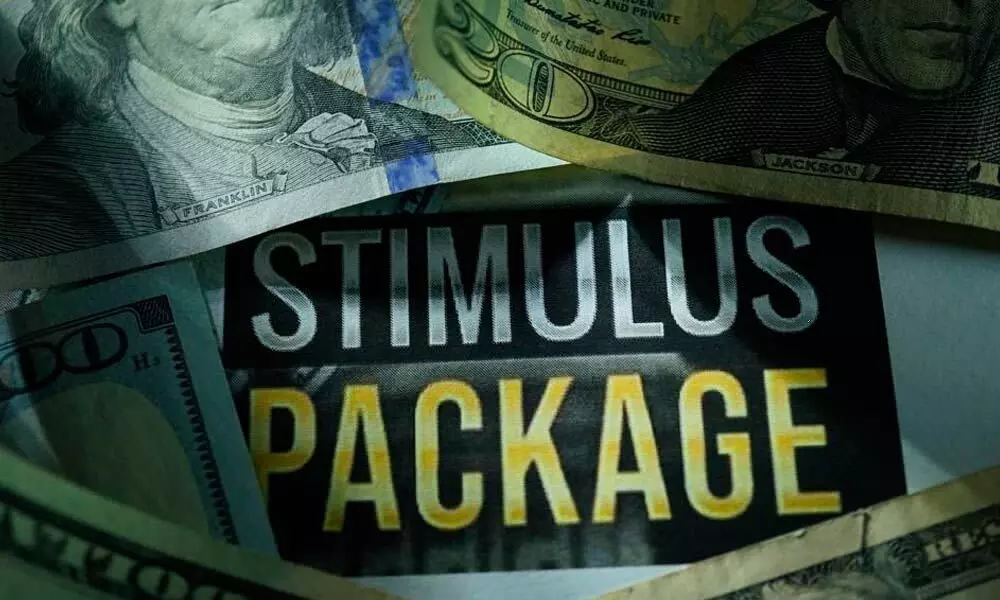Big economic stimulus works. And that's a problem
This helped prevent a health emergency from morphing into a financial meltdown
image for illustrative purpose

If the global financial crisis taught economic policy makers anything, it was go early and go hard. The cost of hesitating proved too great. Now the world's most powerful central banks have expanded bond purchases to about $17 trillion - equivalent to the gross domestic product of China and the UK combined - to keep borrowing costs low and boost Covid-ravaged economies. This helped prevent a health emergency from morphing into a financial meltdown. But with growth reviving and vaccines in the works, officials from Washington to Wellington now face an unexpected consequence: They may have been too successful for their own good.
For all the pre-pandemic talk about central banks being out of ammunition, they were able participants in the nascent recovery. The Federal Reserve took the lead, rapidly slashing interest rates to zero and reviving quantitative easing. These actions were followed by aggressive measures in South Korea, Australia, New Zealand, Thailand, India and Indonesia. The Bank of Japan, which never gave up on stimulus in the first place, prescribed even more medicine. Measures unleashed in Asia went far beyond anything deployed in the region during the 2007-2009 crises.
Once sacrosanct lines have been crossed with alacrity. Indonesia's central bank is overtly funding the national deficit, a blurring of institutional independence that once would have sent investors packing for fear of runaway inflation and currency weakness. (After weakening sharply in late March, the rupiah has been fairly stable.) The Philippines made similar moves without being as vocal. Australia and New Zealand embraced QE.
This all happened a lot faster than any fiscal rescue - monetary policy isn't burdened by the legislative horse-trading bogging things down in places like the US Yet these quick results have thrust officials squarely into the political arena they try so hard to avoid. A demonstrated ability to get things done tends to beget more "please assist" notes. New Zealand's finance minister, for example, wrote the Reserve Bank recently asking it to take home prices into account when setting policy. The ploy was nakedly political, and the RBNZ pushed back, but you can't blame the guy for trying. Central banks have invited this by showing how accommodative they can be.
In Indonesia and South Korea, legislators are pushing to have labour-market stability added to central banks' formal charters. Prioritizing employment over inflation - for decades, the North Star of monetary policy - is striking, given how hard these countries strived for credibility in the aftermath of the Asian financial crisis in the late 1990s. The trade-off for bailouts from the International Monetary Fund involved redesigning their economic regimes, in some cases, to be even more orthodox than those in developed economies.
And perhaps that's where Asia is getting its cues now. At legislative committee hearings in early December, Fed Chair Jerome Powell and Reserve Bank of Australia Governor Philip Lowe sounded like labour ministers or union cadres as they spoke about the prospect of long-term scarring in the job market. This shift to focus on employment is potentially as far-reaching as the one engineered by former Fed boss Paul Volcker in the late 1970s - but back then, the scourge was soaring prices. Now, you need a magnifying glass to find "inflation" in central bank speeches. It's not inconceivable that officials adopt formal unemployment ceilings, just as limits on consumer-price increases were in the past quarter century.
Like it or not, monetary authorities are now players in the most political of spheres: getting people back to work. Even ardent defenders of central bank independence acknowledge that by scooping up truckloads of sovereign debt, they influence how much governments can spend. Andy Haldane, chief economist at the Bank of England, has sounded warnings:
"The horns of this dilemma grow sharper, the larger is the stock of QE," he said in a Nov. 28 speech. "Recent QE has placed central banks in deep, and uncharted, waters. My view is that these QE actions have been necessary to support the economy and hit the inflation target. But they pose rising challenges to public understanding of the purposes of QE and, ultimately, perceptions of independence."
The question of central bank overreach started gaining attention in the aftermath of 2008, when the Fed, European Central Bank and Bank of England deployed massive bond buying to keep interest rates at rock-bottom levels. (The BOJ began its experimentation around the turn of the century.) With QE now so much broader, the dangers of blowback have multiplied. An arduous and uneven recovery is likely to make monetary institutions tempting targets for politicians looking to deflect blame or searching for more cash cows to milk. Operating effectively as third or fourth arms of the government, or as de facto administrative states, leaves monetary practitioners vulnerable.
A good way to restore some backbone would be for central bankers to explain why they acted as they did. Equally important would be clarifying what they won't do. Bromides like "fiscal policy must do more" won't cut it - everybody knows that by now. This is about explaining to the public why, at some point, central banks should be doing less. That would signal a robust recovery is with us. Unwinding stimulus is never easy (witness the bond market "taper tantrum" induced by former Fed Chair Ben Bernanke in 2013). Monetary officials would love to have that problem all the same. (Bloomberg)

